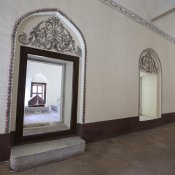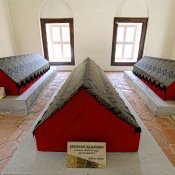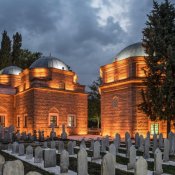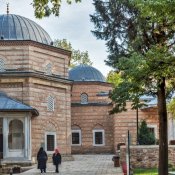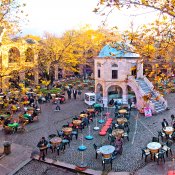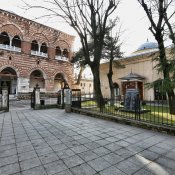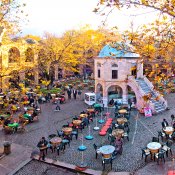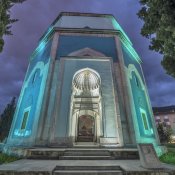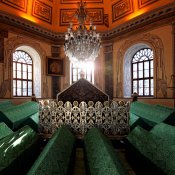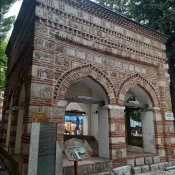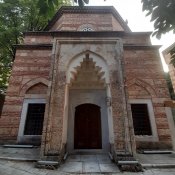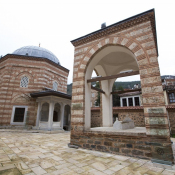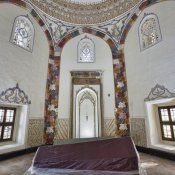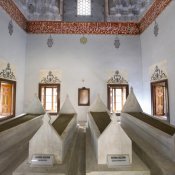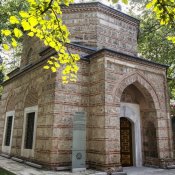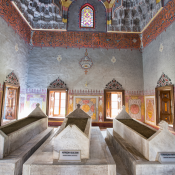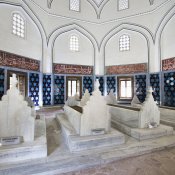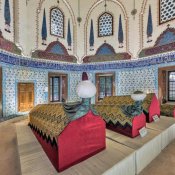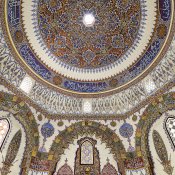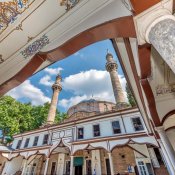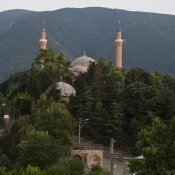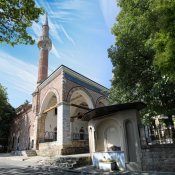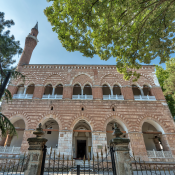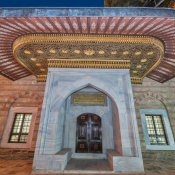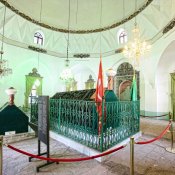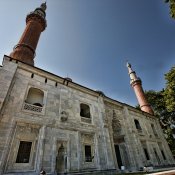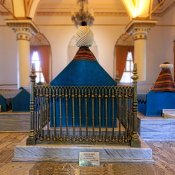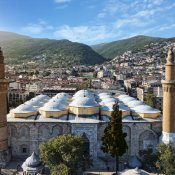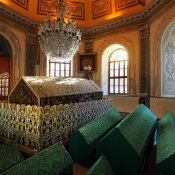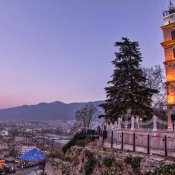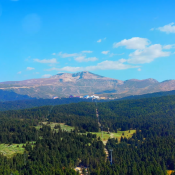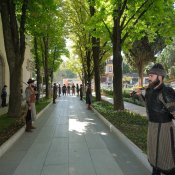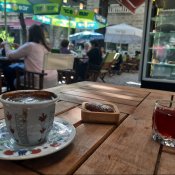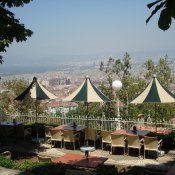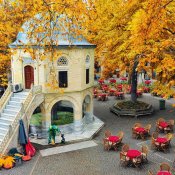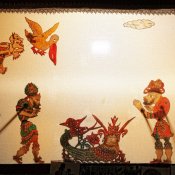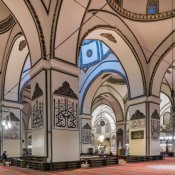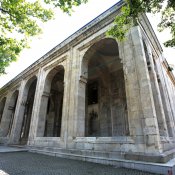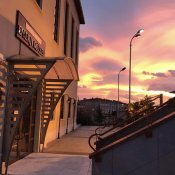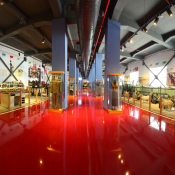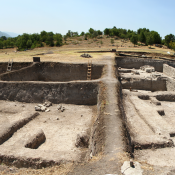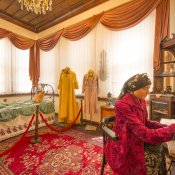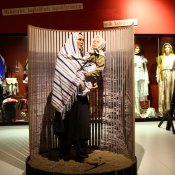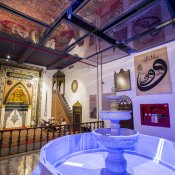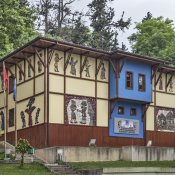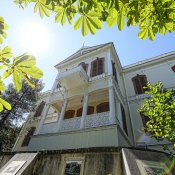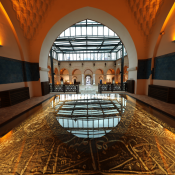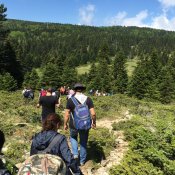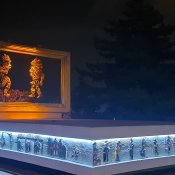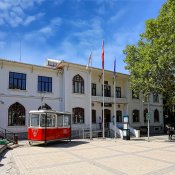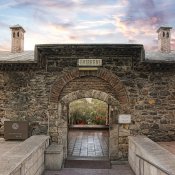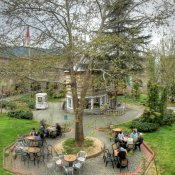Mausoleum of Prince Alaaddin / Mausoleum of Murad II
Mausoleum of Prince Alaaddin / Mausoleum of Murad II
This mausoleum was built in 1481 by Mehmed the Conqueror for his father, Murad II. According to the last will of Murad II, this structure was built with a square plan, non-covered in order to let the rain in, and with a surrounding gallery for the disciples to memorize the Qur’an. Without using a sarcophagus, the Sultan’s body was directly buried in the soil, and there is no one else buried in this mausoleum but him.
Especially its door wings, which are some of the most beautiful examples of fine woodwork, and with their silvered nail heads, their dodecagonal stars, and their eaves decorated with stalactite work, are characterized as artwork.
The columns’ both pedestals and capitals are structural elements of the Byzantine era.
Bonded to the mausoleum’s east wall, there is the mausoleum of Sultan Alaaddin. It is accessed through an opening provided by a window, which was rebuilt as a door. Inside this mausoleum built with a square plan, there are the tombs of Şehzade Alaaddin, Shehzade Ahmet(sons of Murad II), and Hatice Sultan and Shehzade Hatun(daughters of Murad II). Although Sultan Alaaddin died earlier, it is known that his mausoleum was built after the one of his father.
The 16th century ornaments were plastered in the late 19th century, and covered by baroque decoration elements. During the 2013 restoration, this plastering was rasped, and the hand-drawn ornaments dating back to the 16th century below it, appeared, and thus were resurrected.
The mousoleum which was thoroughly restored by Bursa Metropolitan Municipality between 2013 and 2014 is located in the site which was inscribed on the UNESCO World Heritage list in 2014.



